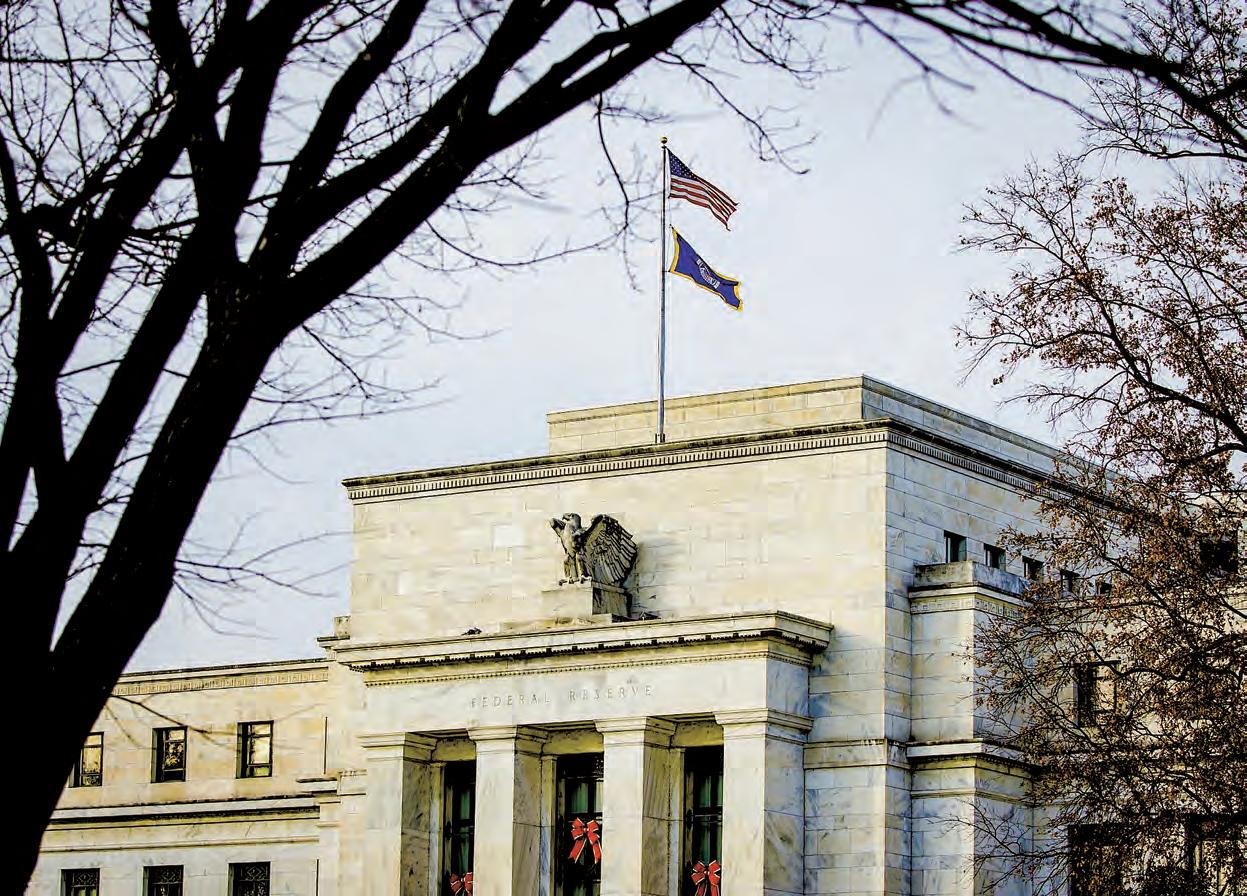
1 minute read
Businessesare learninghow to operate withthevirus
lions ofhouseholds.
Yet the jobspicture seems to besteadily brightening,with wages up,layoffs downandmanyemployers eager to fill jobs Inits report Friday the government sharplyupgradedits estimatesof job growthfor NovemberandDecember too.
Advertisement
“What we’re reallyseeing here isbusinesseslearning how to live withthe virus and operate with thevirus,” LaborSecretary Marty Walsh said.
HenotedthattheproportionofAmericanswho teleworked rose from 11.1 percent inDecember to 15.4 percent lastmonth,suggestingthat manyemployees were able to work fromhome even asomicroncasessurged.
Overthepast year the economyhasaddedmore than 550,000 jobs a month, extendingitssteady rebound from2020’s deep twomonth recession.Still,the UnitedStates remains2.9 million jobsshort ofthe numberithadintheprepandemicmonthof February 2020. Here are five takeaways from the January jobs report:
Betterthan we thought
Not only were the January jobsnumbersunexpectedlylarge butthe Labor Department reportedthathiringlate last year was much strongerthanithadoriginallythought.It revisedup its estimate of the numberof jobsemployersaddedin NovemberandDecemberbya combined 709,000.
Andrew Flowers,labor economistatthe recruiting firmAppcast,suggested that theupgradedrevisionsforjob growth “radically changed ourunderstanding of thelabormarket’s trajectory. Insteadof a slowingtrend from lastsummer job growth looks to be trendingupward.”
Help wanted at restaurantsandhotels
Among the mostsurprising figuresinFriday’s jobs report was thathiringat restaurantsandhotels— thekindsof employers that wouldpresumablydelayhiringduring a wave ofviral cases— rosesharplyin Jan- uary despite theOmicron surge Thehiring gainsin thatsectorsuggestedthat manyAmericanshave learned to live withthe virus andare continuing togo out to eatand take trips. Restaurants and barsadded more than 108,000 jobs last month,hotelsnearly 23,000.
“It confirmsthateach successive wave of thevirus ishaving a smallerand smallerimpactonactivity andlabordemand,”said BrianCoulton, chiefeconomist at Fitch Ratings.
Offthesidelines
Theunemploymentrate tickedup from 3.9 percentin December to a still-low4 percentin January. But itdidso, atleastinpart,foranencouraging reason: ManyAmericans came off the sidelines of the workforceandstarted lookingfor a job,andnot all of themfoundoneright away. Asaresult,theywerecounted asunemployed. Thepercentage of people workingorlookingfor work —theso-calledlaborforce participationrate— rose lastmonth to 62.2percent.
That was the highestsuch rate since March 2020, thoughstillbelow pre-pandemiclevelsofmore than 63 percent.
Theinfluxof workers couldhelpeasethelabor shortagesthathave left many companiesstruggling tokeep upwithsurging con- sumerdemand. “There are financial reasons to return to the workforce,” saidBernard Baumohl, chiefeconomistatthe EconomicOutlookGroup. “Washingtonisnolonger mailingoutemergency checks to households,and inflation continues to erode thepurchasingpower of consumers.”
Risingpay
Because the economy’s unexpectedlyswift rebound has left employersscrambling to find workers,many haveresponded by jacking up wages.Hourly pay rose lastmonthby a strong 5.7 percentforall workers and 13 percent forthosewho work for hotels, restaurants andotherleisure andhospitality companies. Still,pay overall hasn’t been keepingupwithinflation, which inDecember was running atthefastest yearover-yearrate since 1982 In December, average hourly wages were actuallydown2 percent from a yearearlier after adjustingforhigher prices
Agreenlight forthe Fed
Thestrengthofthe jobs report helps clearsthe way forthe FederalReserve to reverseitspolicyof keeping interestratessuper-lowto protecttheeconomy from coronavirusfallout Thecentralbankhas indicatedthat itwillstart raisingitsbenchmark rate,now nearzero, several times beginningin March to try to combathigh inflation. “The (jobs) report inits totality stillpoints to a robustlabormarket, characterized bylow unemploymentandstrong job creation, thatmanaged to successfullypushthroughthe disruptions created by the omicronvariant,”said Jim Baird, chiefinvestmentofficer atPlante MoranFinancialAdvisors.“Notthatthe Fed needed another reason to tighten in thenear term, butthey just got it.” Wisemanwrites for TheAssociated Press.








